Extinguish your torches. Put down your pitchforks. I love film. I shoot film.
The question I’ve struggled with though, is why? Why do I still shoot film? It’s expensive to process, ridiculously tedious to digitize, and, even with expensive drum scanning, still doesn’t reach the depth and range of modern digital files. Well, the answer for me has been nostalgia, the feel of the image, as well as the ability to take a step back and focus on shooting in a more organic way that coincides with my initial falling in love with photography. A beautiful reality though, is that through software, and remarkable sensor technology, we can quickly and easily replicate the look of film if we want.
Before I continue further, a disclaimer: this post is not meant to be any more than a personal experiment in which I’ll look to answer this question for myself when using my go-to digital solution to analogize results within my digital reality and workflow. While I may not need film, I sure do love to replicate the look and feel of it. C’mon in…
_
Today, I’m looking at Kodak Tri-X 400. It’s a legendary black and white emulsion in its own right, and a downright lovely film to shoot. Historically, it was a “fast” panchromatic film specified for action and low light applications. For those who don’t remember when ISO 400 was actually considered fast, let me say that we are all are very spoiled nowadays. I shot a roll of 120 in my Hasselblad 500 C/M using the CZ Planar 2.8/80mm T*, and brought along my Sony a7II and Zeiss branded 55mm f/1.8 lens, to both use as my working light meter, and to compare results from when running the RAW files shot on the Sony through Exposure, using the Kodak Tri-X 400 film emulation preset.
I had the film processed and digitized by my local professional lab (who had to ship it out as they don’t process black and white in house anymore, as seems to be the case for most pro-labs nowadays). Once processed, they drum scanned the negatives for me at their “High Resolution,” which is a measly 2,000 x 2,000 pixel resolution. That is what I have available to me if wanting to digitize my 120 film without re-sending my negatives out to have even more expensive scans made elsewhere, as I would assume is largely true for many of us. The results shown here are based on this reality, and I’ve resized all my Sony ARW files (converted to 16-bit TIFF, and worked on in Photoshop) to those exact dimensions after processing in Exposure, so that I can see as close to apples to digital apples, as I’m able.
Keep in mind, I was shooting non-static scenes, and requiring quite a bit of time between shots to focus and compose the shots through the Hasselblad, so while the subjects may look a little different in frame, the apertures and shutter speeds used were identical to produce identical exposures within the scene, and light available.
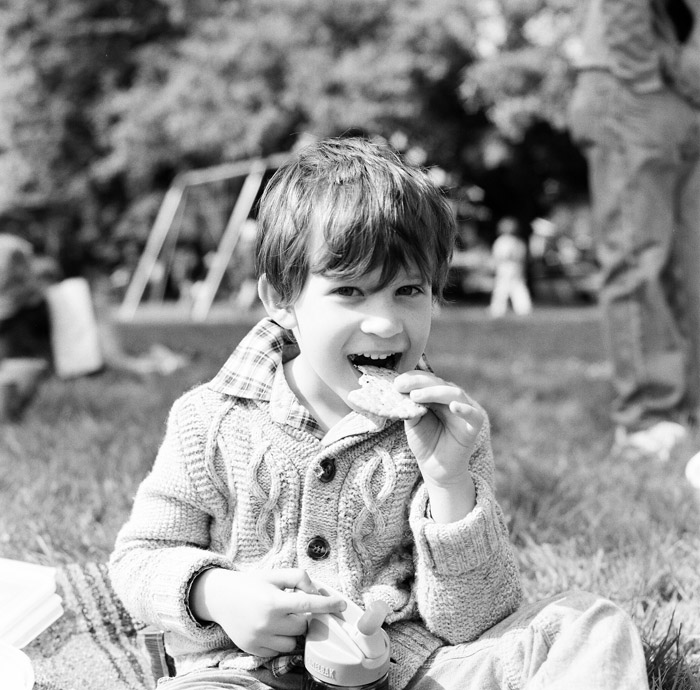
Kodak Tri-X 400 (120)
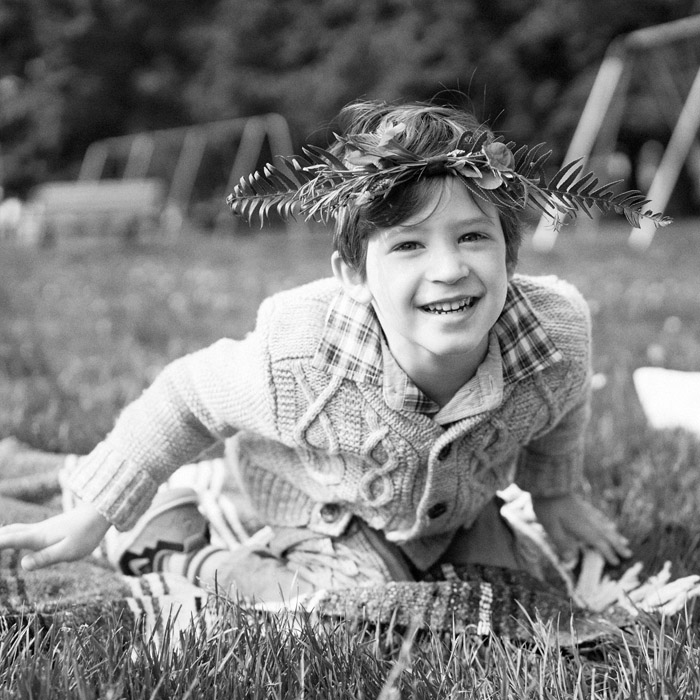
Sony ARW file, processed in Exposure — Kodak Tri-X 400 film preset
The initial, and immediate difference I see is in the highlights. This is largely due to the pure dynamic range, highlight recovery and retention capability of the newer digital sensors, especially the Sony sensors. Highlights are blown and the contrast is higher in the Kodak Tri-X scan, which can be down to a variety of factors within the digitization of the negative along with the characteristics in the film itself, but again, this is what I have available to me from my lab. I can easily increase the contrast, and push the highlights in the Sony file, if I so choose, as is another benefit when working with a tonally rich digital RAW file.
Here are 100% crops, after being processed and resized, so that the pixel dimensions are identical:
You can click on either to see them full sized, and I surely suggest doing so. To my eye, the grain is so much more pleasing and organic looking to me in the Sony file with Exposure’s Tri-X treatment. I’d wager a large amount that a print made from the actual negative, and a print made from the full-sized Sony file after being processed through Exposure, is going to look far more similar than any prints made from the digitized negative file, which to me, looks pretty horrible. Again, factors outside of my control within the digitization process seem to negatively affect the image from my film negative.
Here are a couple more comparison shots from the same roll, captured in concert with the Sony a7II, just as all others were. Film scans first, followed by the processed Exposure files:
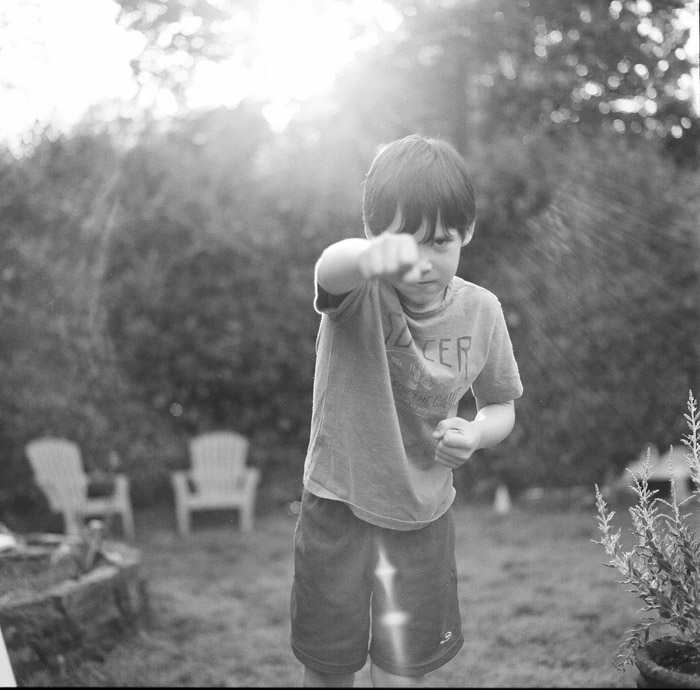
Kodak Tri-X 400 (120)
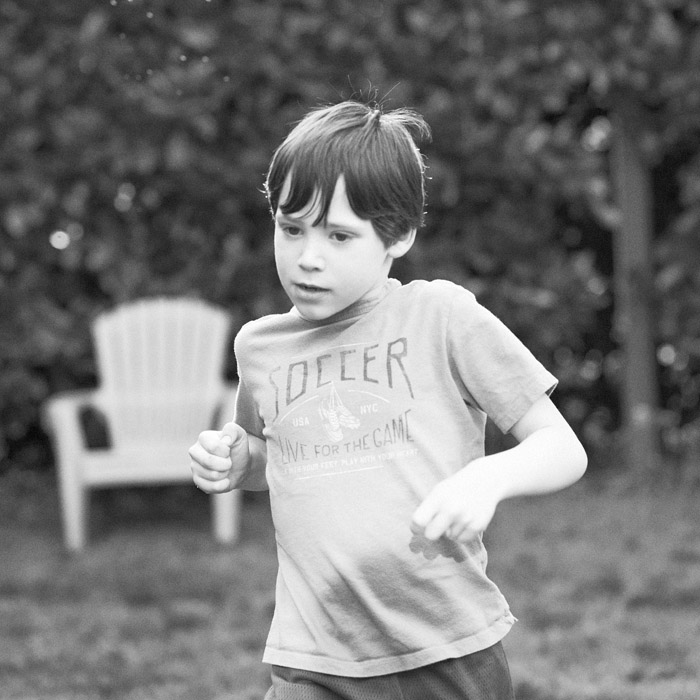
Sony ARW file, processed in Exposure — Kodak Tri-X 400 film preset
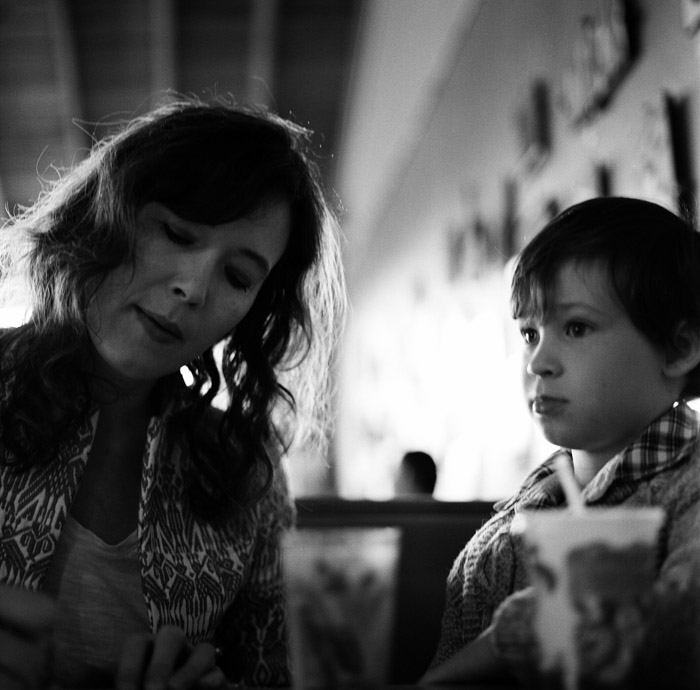
Kodak Tri-X 400 (120)
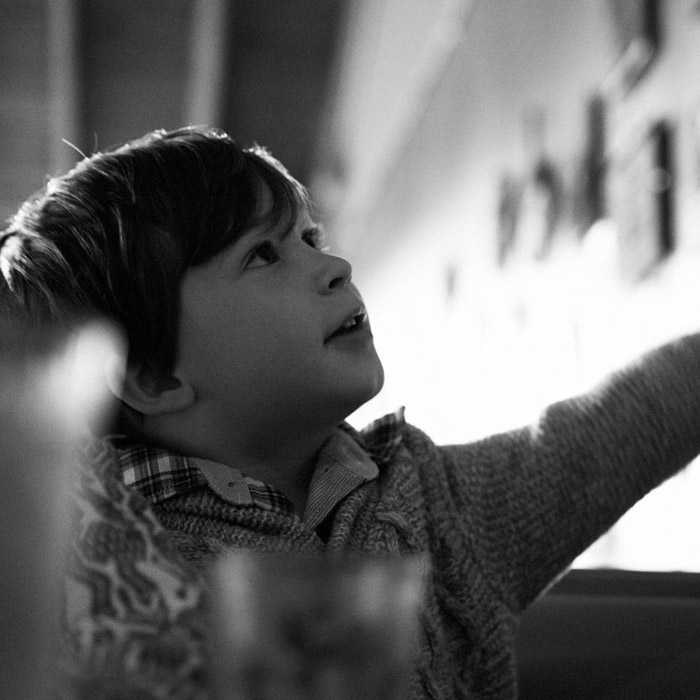
Sony ARW file, processed in Exposure — Kodak Tri-X 400 film preset
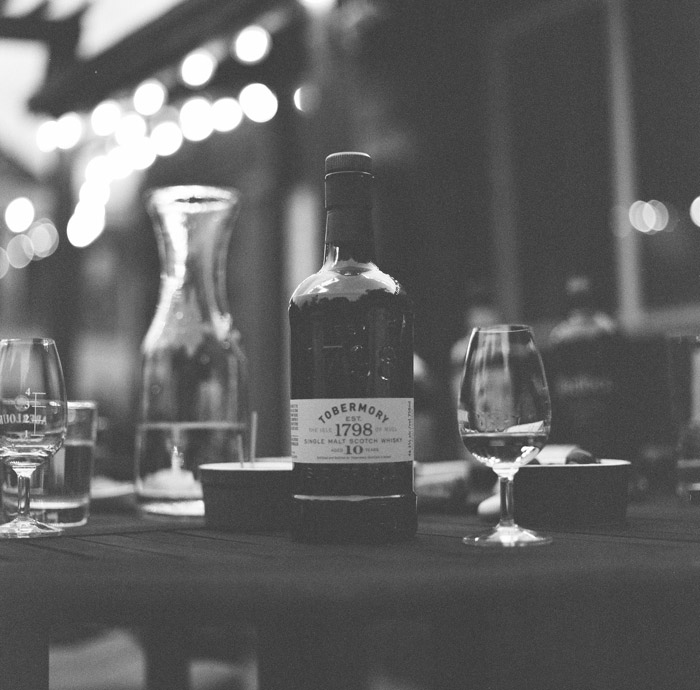
Kodak Tri-X 400 (120)
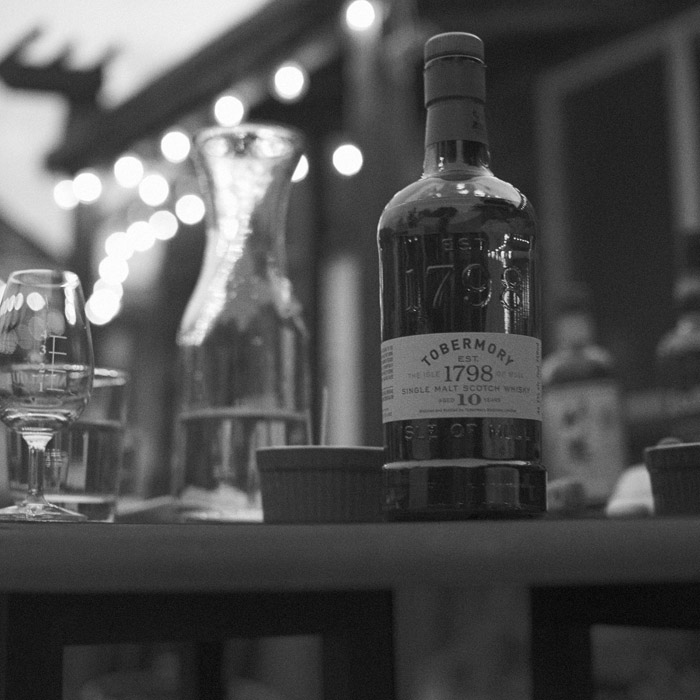
Sony ARW file, processed in Exposure — Kodak Tri-X 400 film preset
So, to get back to the more spiritual question originally posed, do I need to continue to shoot film? Simply put, no, I don’t. I really don’t see any true benefit in image quality, at least shooting medium format compared to full frame digital files. Will that stop me from shooting film? Absolutely not. However, I have found here that I get more dynamically deep, sharper and better image files with my modern “full frame” digital cameras than I’m getting from my medium format film setup for this particular emulation anyway, which is pretty cool on one hand.
The grain replication, tonality and emulation created in Exposure gives me the benefit of the film look, with the remarkable exposure latitude and resolution of my digital files further enabling me the ability to tweak my images to get just the image I may be after. Film will never die, for me at least (seriously, I’m stockpiling it. I have a freezer and fridge full of it, from 35mm Kodak Gold and Ilford Delta, to 120 Tri-X and Portra 160 NC), but I cannot say that it is “better” in any way, beyond the feel I get when shooting it on occasion, than what I can do with my digital files anymore. That is both sad and exciting for me as I look into my photographic future.
Try Exposure Today


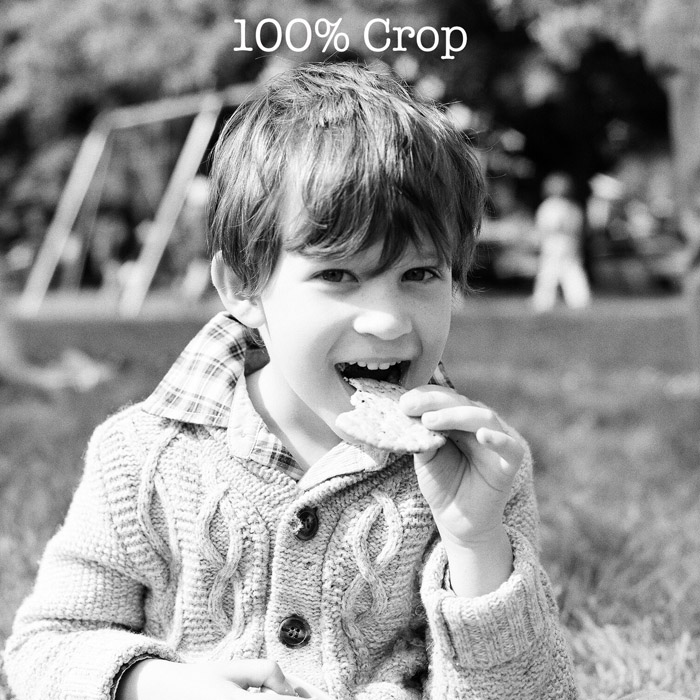
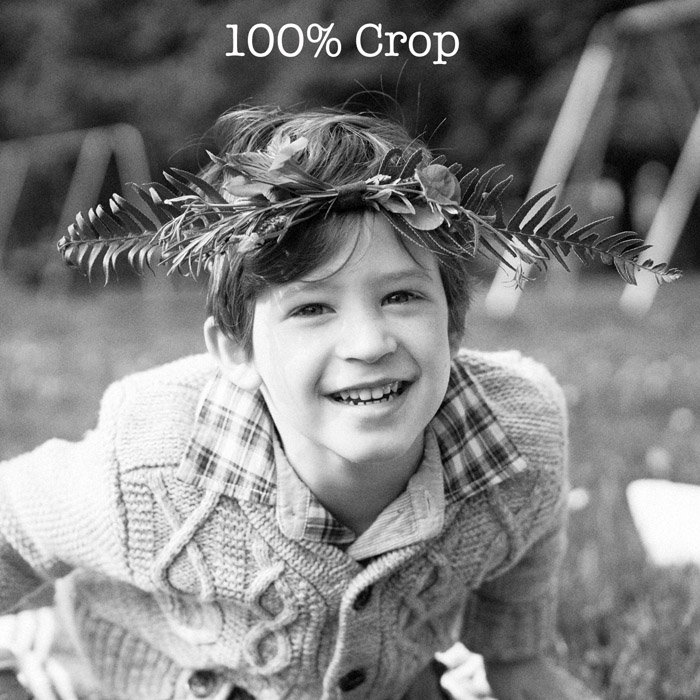










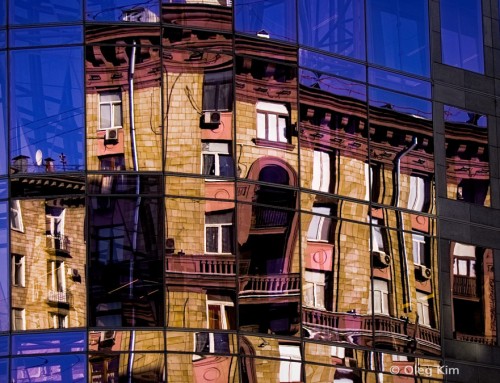
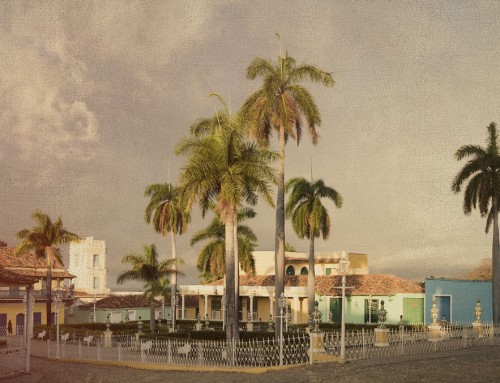
excellent thoughts, well written. It’s nice to be old enough to enjoy film :-)
Thanks for the article Tyson. Do you always leave the overall grain strength at 100.00 ?
Hi Darren,
Tyson normally brings the grain strength down below 25%, if not eliminate the grain entirely. The color and tonal re-assignment of the filter alone is usually enough for him.
In the comparison article, he kept everything at defaults for the Tri-X preset as he didn’t want to mess with the conversion formula.
Sorry, but I am not convinced. While you will not see it in Tyson’s above examples you will see the special 6×6 or 6×7 look in lots of other pictures, a look you won’t achieve with any film emulation software.
https://www.facebook.com/photo.php?fbid=1152320174828446&set=gm.1053514234733933&type=3&theater
Well, you can always try the demo and see for yourself.
Analog film emulsions are essentially different from digital sensors. Current sensors exceed the dynamic range of any and lug film. That being said, using Zone system techniques with Pan X ( precise control of exposure, development and printing) could capture much wider range of tonality than your triX example. Note TriX was noted for blocking up highlight areas.
Color photography is even more complex as the mechanism of color transparency film and negative film image capture was at best a sophisticated compromise. Nevertheless Correcly exposed Kodachrome produced images with great dynamic range and pleasing color tonality which is only recently available with high end end sensor technology.
Emulating film is interesting and visually pleasing. I use a different software tool. Perhaps alien Skin is worth experimentation.
All the best. P
Good article, Tyson. You might be interested in retro colour film. Have a look at
http://www.Nicholson.net-model.com for retro colour images, 1950s, 1960s, some 1930s attempted.
Mainly fashion photography and adverts, fashion to look like Ektachrome Process E1, suitably faded, and Agfacolor CN 17 print film.
Also look at http://www.photomemorabilia.co.uk
There is far more to a comparison than a setting. Had he used the same Hasselblad lens on the Sony, the comparison night have made more sense. The Hasselblad booked is lovely. The Sony is not. With the caucasian skin and cream sweater, I preferred the Hassey images in the first set. Also the bottle on the bar was muddy, used grade 4 or 5 paper… :-) Mark who shoots with Nikon FX DSLRS Fuji X Pro and Leica and Hasselblad
Hey Mark — I’m happy to talk more with you if you want to do some comparison shooting for an article. ;-)
Interesting article. I only shoot 4×5 sheet film these days (well, for the past 30 years) and thus I can and do expose and develop each frame individually. Therefore, I am never faced with the compromise that is inherent with roll film. (In short, I wouldn’t end up with a muddy Tobermory). I do admit I fought digital for a long time, but no longer. I see the RAW image as a tool that provides me a flexibility similar to my manipulations of negatives in the darkroom, but, I must admit, somewhat better. What shooting 4×5 does for me is no longer so much the mechanical product (although sheet film is very information dense), it is that it slows me down and gives me the opportunity to reflect on what I’m doing. There is also something reassuring about a beautiful machine (I have an Ebony SV45U2 and a Horseman monorail) that doesn’t need batteries. Still, your comparisons illustrate how very far the digital world has come in the past decade; most excellent stuff.
Of course digital can look like film, but it will always and forever be digital looking like film. I think that’s what keeps drawing me back to the analog.
Interesting. I’ll have to try that software, though I actually preferred the 3-D effect of the film to the flatter look of the digital in that first picture